Electricity, today, it's hard to do without. And when prices soar, it stings! With the changes in rates, everyone is looking for the best way to avoid an explosion in the bill. This is whereEDF Tempo resurfaces. But is it really the right plan? Having used it myself for over a year now, I'll tell you everything!
What exactly is EDF Tempo?
Before jumping headlong into an offer, it's best to understand what you're dealing with. EDF Tempo is a pricing option where the price of the kWh changes depending on the color of the day. There are three types of days:
– Blue: the cheapest (and fortunately, there are 300 per year!)
– White: a little more expensive
– Red: this is when it really stings! Only 22 days, but it's best to avoid plugging in your raclette oven on these days.
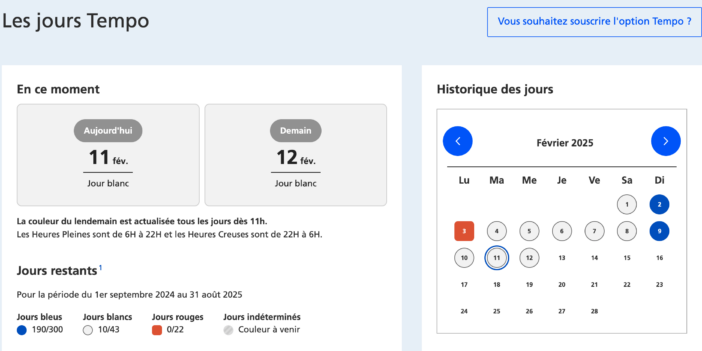
The idea behind this offer is to encourage consumers to shift their consumption to days when EDF produces electricity at a lower cost. Not stupid, right?
The new electricity prices in 2025: why does it change everything?
If EDF Tempo becomes even more interesting, it is because regulated electricity prices continue to rise. We have seen it clearly in recent years, the bill has continued to increase, and it is not over, even if some have been able to experience a small decrease on February 1st. One of the reasons is the need to invest in the network, renewable energies and of course, production costs.
As of February 1, we were able to see these decreases:
- Base Option: decrease of 20% (i.e. €0.2016/kWh instead of €0.2516/kWh)
- Off-Peak Hours Option: decrease of 21% in peak hours (i.e. €0.2146/kWh instead of €0.27/kWh) and 18% in off-peak hours (i.e. €0.1696/kWh instead of €0.2068/kWh)
But if we take other offers, such as the Zen offer at EDF, to which I subscribed a few years ago, we see increases:
- Zen Fixe Option Base: increase of 9% (i.e. €0.1906/kWh instead of €0.1753/kWh)
- Zen Fixe Option Heures Creuses: increase of 8% in peak hours (i.e. €0.2028/kWh instead of €0.1876/kWh) and 10% in off-peak hours (i.e. €0.1608/kWh instead of €0.1456/kWh)
There are of course many other offers, which are important to compare. The EDF Tempo formula has also dropped a little, ranging from 0.6 to 5.4% drop depending on the colors and HP/HC. A decrease unfortunately somewhat cancelled out by an increase in the subscription price. Only the red peak hours rate has undergone a nice 12% decrease. Which gives us in the end:
| Days | Peak hours | Off-peak hours |
| Blue | 0.1552 €/kWh | 0.1288 €/kWh |
| White | 0.1792 €/kWh | 0.1447 €/kWh |
| Red | 0.6586 €/kWh | 0.1518 €/kWh |
As we can see, despite the 20% decrease in the Base and HC/HP rate, the Tempo offer remains much lower, the price of its peak hours being cheaper than the off-peak hours of the regulated rate! Only the red days are really to be avoided.
And in 2025, the trend is not going to reverse. Consumers who stay on a classic rate risk having an unpleasant surprise when their bills arrive. Result: those who are able to manage their consumption intelligently could make significant savings with EDF Tempo.
Why can EDF Tempo be a good deal?
Let’s be clear: EDF Tempo is not for everyone. But for those who can adapt, it is a godsend.
Already, most days of the year (the famous blue and white days), the kWh rate is lower than that of traditional offers. Basically, if you heat your home mainly on these days and avoid excessive consumption during the red days, you can seriously limit your bill.
Another crucial point: if you have a well-insulated house, a programmable water heater or a fireplace (long live the good old wood stove, like at my place!), you already have a considerable advantage. You can heat your home on cheap days and keep the heat on during the red days.
Finally, homes equipped with offset appliances (dishwashers, washing machines, etc.), or even solar panels, have all the cards in hand to maximize savings. The disadvantages: is it really feasible on a daily basis?So yes, the EDF Tempo idea is attractive on paper. But in real life, you have to play the game! And that's where it gets a bit tricky.
The famous 22 red days, that's where the difficulty lies. On these days, the price of kWh can reach peaks. If you're not careful and you heat to the max, your entire budget takes a hit, and you cancel out the savings made on other days. So you have to be able to organize yourself and have alternatives for these critical days.
Another important point: you need a Linky meter. It allows you to precisely monitor the color of the day and adapt your consumption in real time. If you're not the type to monitor your consumption or adjust your schedule according to EDF, this offer may not be ideal for you.
And of course, if you live in an apartment without alternative heating or you can't adapt your habits, the interest decreases sharply.
How to use EDF Tempo to maximize your savings?
If you are motivated and ready to take on the Tempo challenge, here are some basic principles.
First golden rule: get into the habit of monitoring the color of the day. EDF warns the day before for the next day, so a quick glance at the EDF app or website, and hey presto, you adapt your consumption. For my part, I use the Hello Watt app, which allows you to display a small widget on your smartphone with the color of the day and the next day. You don't even need to go into the app, and what's more, the information is often displayed before EDF's official announcement!
Then, optimize the heating. If you can heat a little more on blue days and reduce the red days (or switch to another source like a wood stove), your wallet will thank you!
Household appliances must also keep up. It is better to run the washing machine and dishwasher on the cheapest days. The same goes for cooking: if a slow-cooked dish can wait for a blue day, why deprive yourself? Note that red days still benefit from off-peak hours between 10pm and 6am, at a much more affordable rate, allowing you to start machines and even recharge an electric vehicle at night without blowing your bill. Because it can happen to have 5 consecutive red days, which can be more restrictive (fortunately a red day will never fall on a weekend or a public holiday, but it is quite possible to be in red on December 24, which is not a public holiday…).A series of red days is possible!
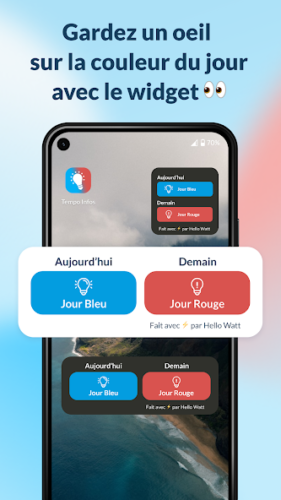
Finally, if you have the possibility of investing in a programmable hot water tank (or to control it as seen in
our guide
), a
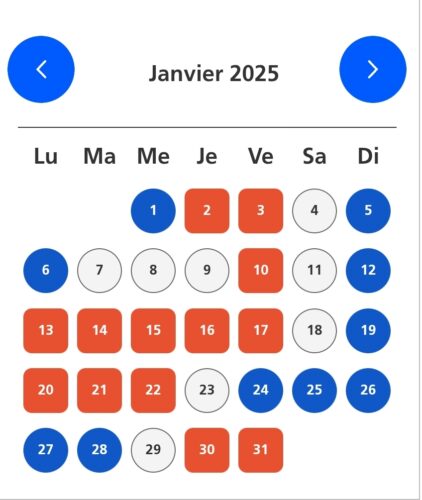
or even solar panels, the combo becomes interesting. Your local production could compensate for the famous red days! Because a red day can very well be very cold, but very sunny! Ideally, if you have batteries like theZendure Hyper 2000 or the Ecoflow Delta Pro 3
, for example, it is even possible to charge these batteries at night during off-peak hours, to power the house during the day. This is what I did this year, which gives on a typical day: Recharge EV and water heater at night, and almost no consumption during peak hours As you can see, all my consumption goes to night during off-peak hours, and I consume almost nothing during the day, despite the fact that there are two of us working from home!If you have an electric vehicle with a bidirectional battery, it can even power your home during red days so as not to draw on the general network, your electric vehicle becoming a big battery for the home.Verdict: EDF Tempo in 2025, good or bad idea?
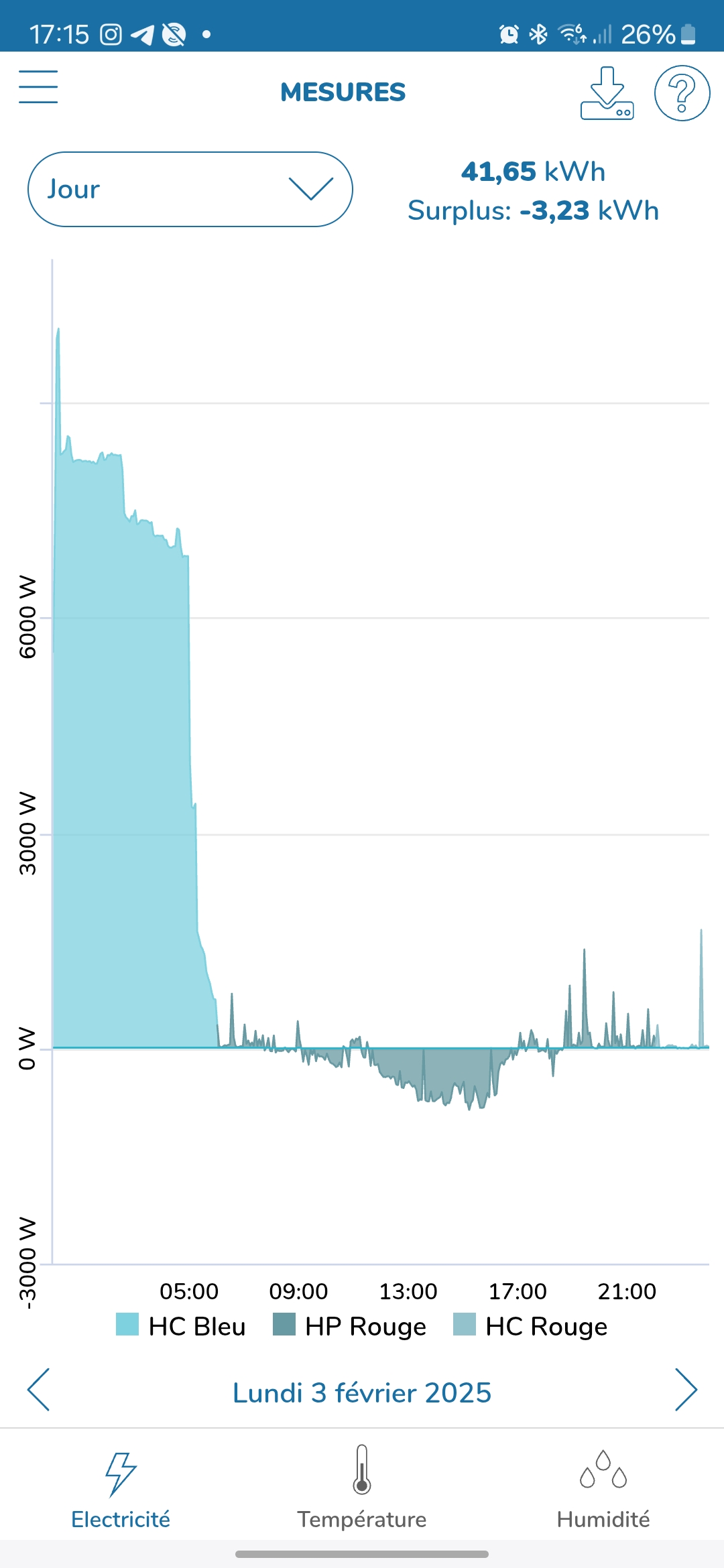
Electricity is becoming more and more expensive, and you will have to be cunning to prevent the bill from soaring. EDF Tempo is a smart option, but on condition that you play by the rules of the game. After all, who said that controlling your consumption could not be a fun challenge? And for those used to home automation, integrating Tempo data into the system to automatically control the devices accordingly makes things even easier! Would a short guide on the subject interest you, by the way?
In any case, all the red days have already passed for the season. Switching to EDF Tempo now is therefore just the certainty of paying less for electricity, without having to monitor anything. Until next winter.
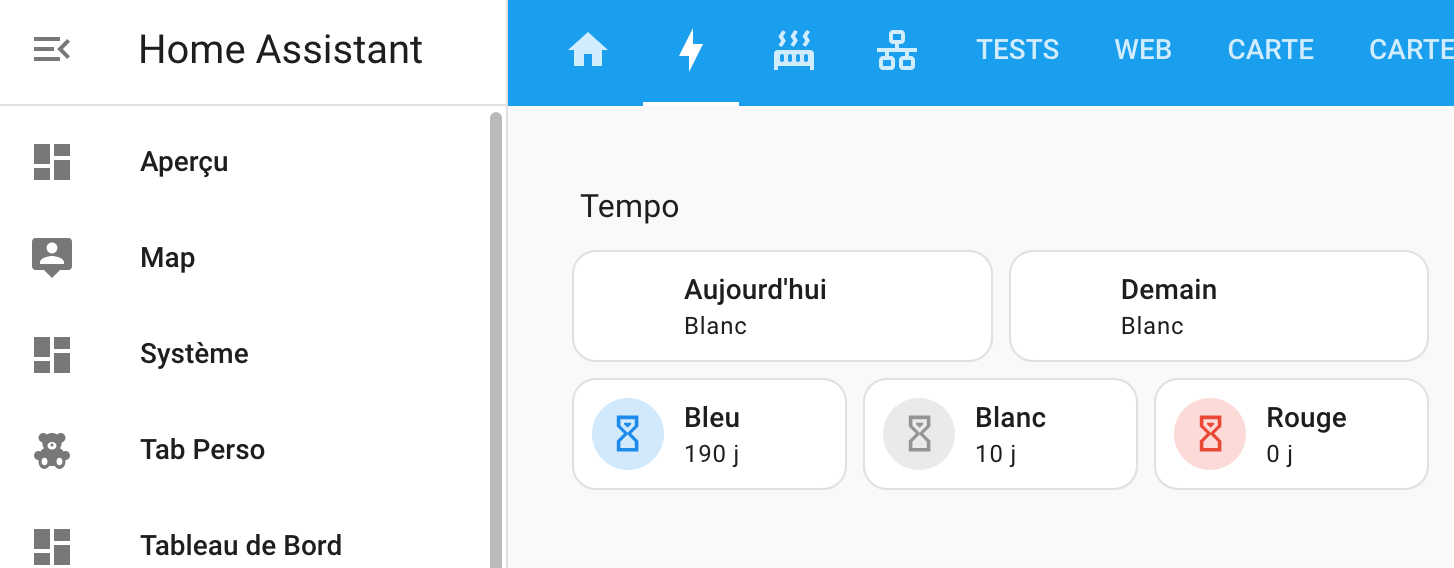




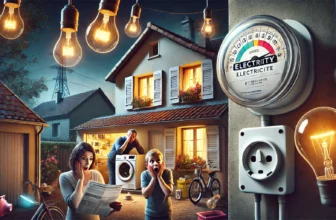

Please remain courteous: a hello and a thank you cost nothing! We're here to exchange ideas in a constructive way. Trolls will be deleted.